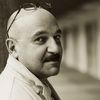The end of the year is a particularly busy time for all of us. We are shopping, we are cooking, we are praying. I am praying to all the Gods and Muses that inspire artists to create their best work. When I see artworks that stop me in my tracks, I swear I start to hear divine whispers...
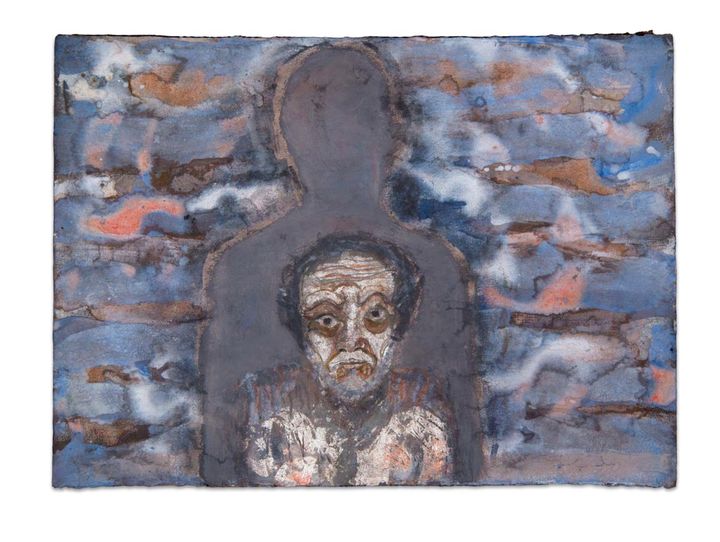
No me deja solo (It Never Leaves Me), 2017. Francisco Toledo.
Internationally-known Mexican artist Francisco Toledo (b. 1940) has a very focused, very special exhibition at Latin American Masters gallery at Bergamot Station. There a few dozen mixed-media portraits of old men – all of them rather sober, and moody. All of them, staring at us, demanding our attention.
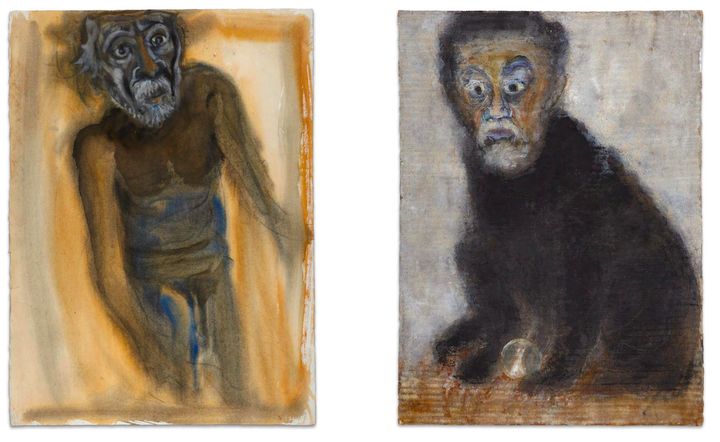
L: Cuerpo cansado (My Tired Body), 2017. R: Guardián de la casa (Guardian of the House), 2017. Francisco Toledo.
These are self-portraits of Toledo, who is 77 years old. Toledo doesn’t make the slightest effort to make himself look younger, or to compliment himself in any way. In one portrait, he is mercilessly naked and shivering. In another, he paints himself as a cat. Yes – his body is 77 years old, but Gods and Muses keep his spirit and soul young.
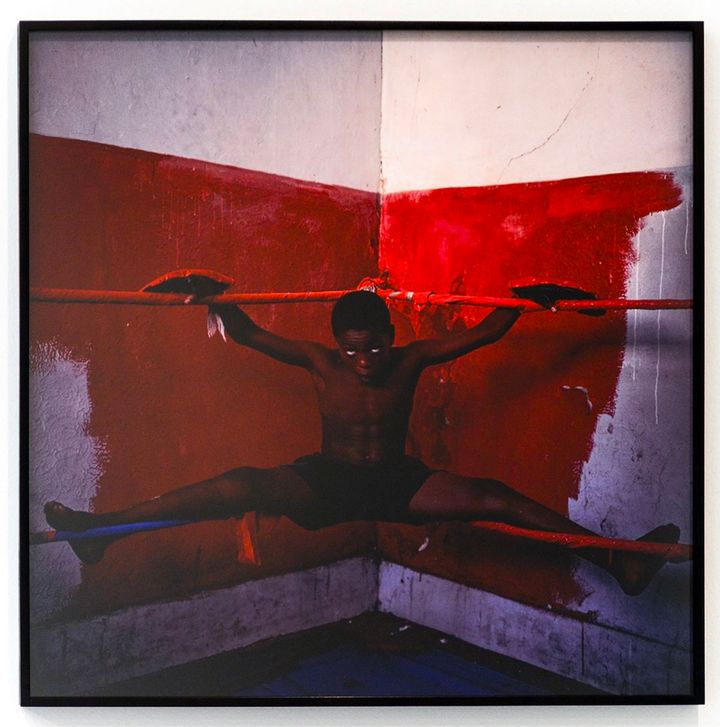
Miguel Rio Branco, Exuzinho Looking Forward, 1991/2017.
Christopher Grimes Gallery has two solo exhibitions that you want to hurry up and see, as they close this Friday the 29th. The main gallery has a selection of photographs by Brazilian artist Miguel Rio Branco (b. 1946). Once again, we are looking at artworks which have no desire to idealize the subject, which, in this case, is marginalized communities in Brazil; prostitutes, street youth, and people of all backgrounds who flock to a boxing academy in Rio de Janiero to train. Looking at a 1991 photo of a semi-naked boy, hardly 10 years old, with gloves on, you see him exhausted, straddling the corner of a boxing ring as if he was crucified. One prays and wonders if he is still alive today.
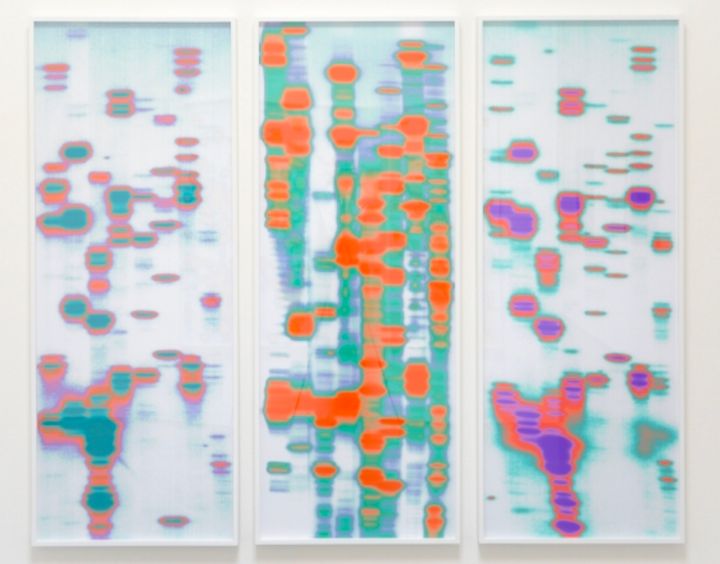
Iñigo Manglano-Ovalle, Lu, Jack and Carrie (from The Garden of Delights), 1998/2017.
In the smaller gallery, there is a series of digital print triptychs that come across as dynamic, abstract, colorful compositions. But, actually, each triptych features DNA samples of three people who are close friends. This unusual artwork by American-Spanish artist Iñigo Manglano-Ovalle is made in collaboration with a team of laboratory technicians who helped the artist create these genetic portraits, which echo the various racial mixtures of 18th century casta paintings once popular in Spain’s American colonies.
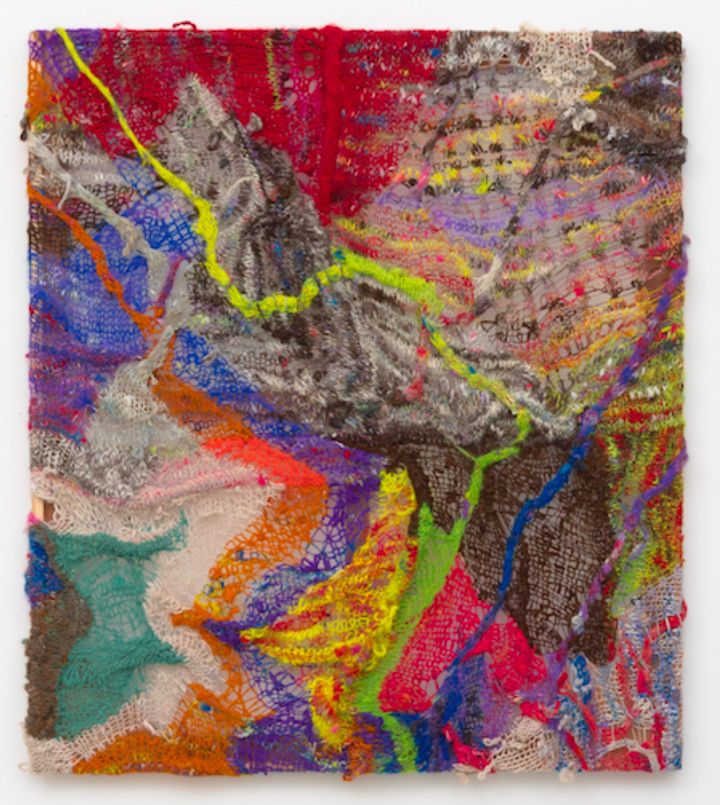
Channing Hansen. 9-Manifold, 2017.
The current exhibition of Los Angeles artist Channing Hansen at Marc Selwyn Fine Art is called Fluid Dynamics, and fluid, it is. From a distance, you experience the artwork as a pulsating, vibrant, abstract composition. But, upon close examination, you see that each artwork is intricately spun, knitted, and stretched over a traditional wood frame.
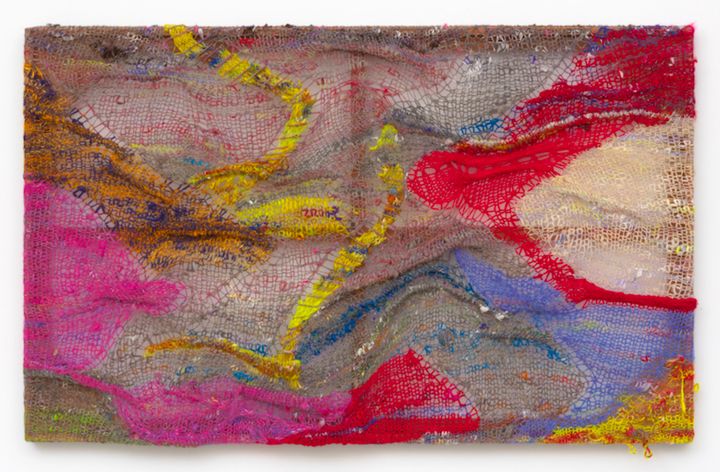
Channing Hansen. 8-Manifold, 2017.
Each work is semi-translucent, with the structure of its frame visible behind the woven yarn, a complex mixture of various fibers including wool, alpaca, silk, and mohair. It’s intriguing to see a male artist boldly stepping into the art and craft of knitting, traditionally embraced by women.
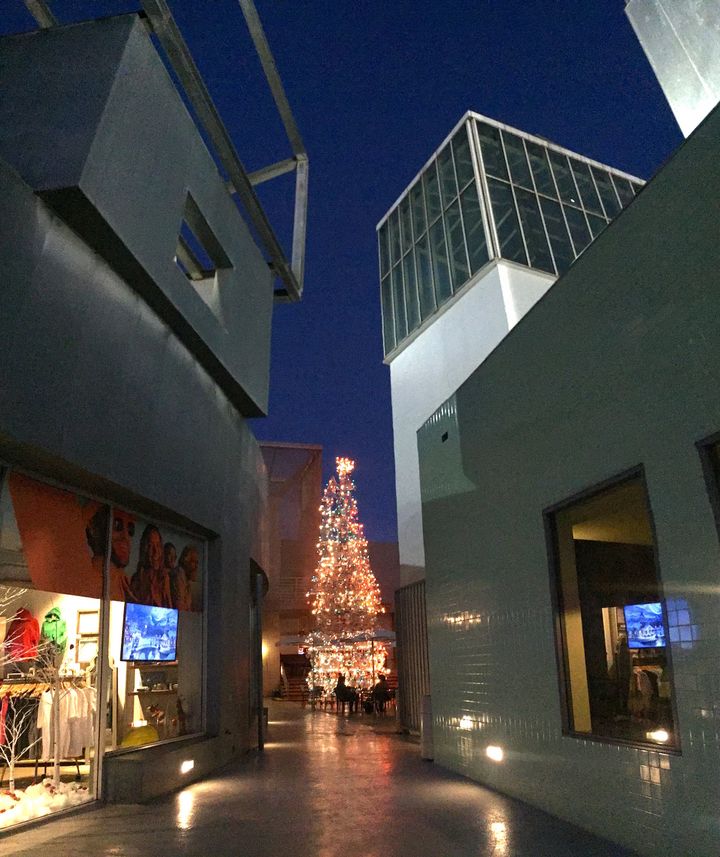
Wabi Sabi Tree by Anthony Schmitt at Edgemar (Frank Gehry, 1988) in Santa Monica.
And, let me end this holiday Art Talk with a photo of my favorite Christmas tree, which, every year, appears in the courtyard of Edgemar complex on Main Street in Santa Monica. This glimmering, shining tree is made out of shopping carts, decorated with lights and ornaments. For over 20 years, Los Angeles artist Anthony Schmitt and his team have erected this unique 33-foot-tall Christmas tree, framed by Frank Gehry’s spectacular architectural forms.
Edward Goldman is an art critic and the host of Art Talk, a program on art and culture for NPR affiliate KCRW 89.9 FM. To listen to the complete show and hear Edward’s charming Russian accent, click here.
To join Edward’s Fine Art of Art Collecting Classes, please visit his website. You can read more about his classes in the New York Times here and in Artillery Magazine.
